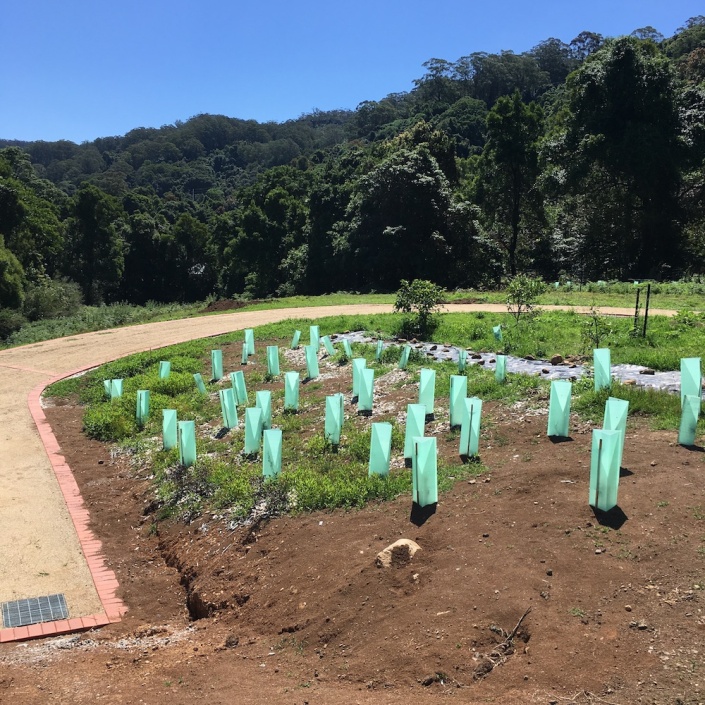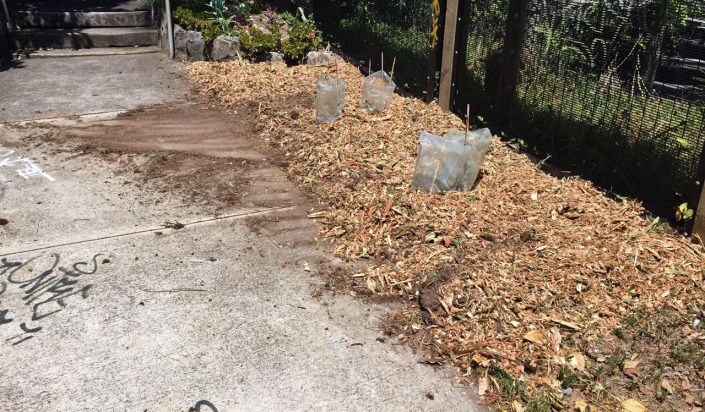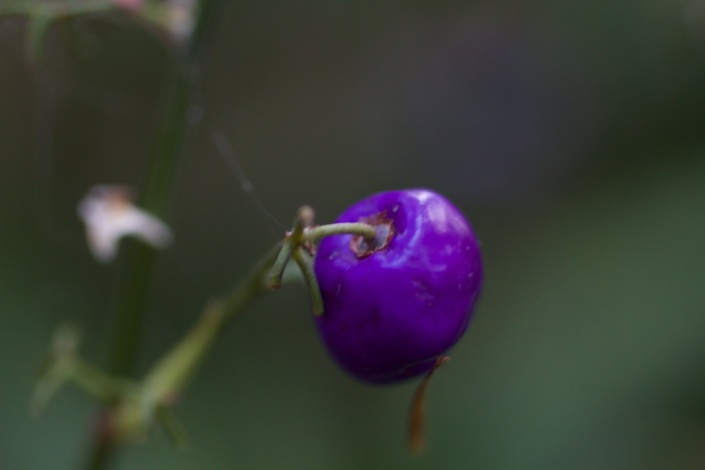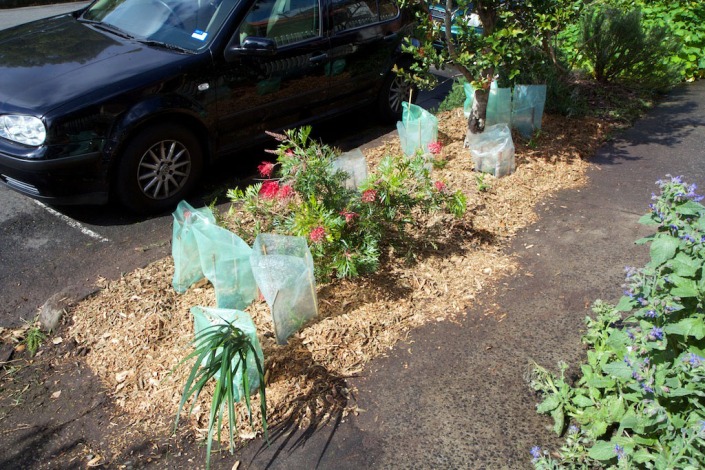native gardens
Planting as we go
Too many properties are landscaped as an afterthought, with plants going in long after all the other work is done (or not at all). This is not how we’re tackling Lewisham Farm.

We’re intentionally planting as we go, entirely with Australian natives. This includes a wide mix of callistemons (‘bottle brushes’), grevillias, banksias and leptospermums (‘tea trees’).
There are good reasons for these plantings:
- Most flower heavily, attracting native birds and feeding the bees.
- They will flower throughout the year, providing Priscilla with cut flowers.
- They will screen things like the shed and water tanks, blending them into the landscape when viewed from the house or road.
- They help to define ‘garden rooms’, breaking up the acres into smaller spaces with their own character.
- When planted densely, they will keep down the weeds, at least to some degree.
- They will be beautiful, making the farm a lovely place to spend time.
By planting them early, they get a head start in the disturbed soil, before the grass and weeds have had a chance to reestablish themselves. It also means that we’ll get the benefits sooner!

By largely using tube stock plants, the cost of plants for a given area is only $50-100, which is nothing in the scheme of things.
And there’s much more planting to come…
Making progress with our railway plantings

The key to guerrilla gardening is to be indifferent to the survival of any one plant, while remaining passionate about the success of the garden as a whole.
In the year since I last blogged about our guerrilla gardening along the railway line, there has been plenty of progress, and a fair share of setbacks.
First the challenges:
- The railways folks decided to replace the electricity substation right next to the garden, leading to trucks being squeezed down the pedestrian pathway, crushing a pile of plants. (Their reworking of the security fence also killed off a bunch more.)
- Pretty much all of the groundcovers were wiped out by the big hailstorm.
- Local kids keep stealing the stakes used to hold the plant guards.
- Plants are randomly damaged, by dogs or passing people.
- Some plants simply don’t survive the harsh conditions.
But the good news:
- The garden has been progressively extended, and it’s now 10+ metres in length.
- The more established plants are now growing strongly, including all the acacias and callistomons.
- I’ve grown most of the plants from cuttings, so the cost has been minimal.
- Surprisingly few plants have been stolen.
The key is to keep planting each weekend, to replace the 2-3 plants that are damaged, and to then get slightly ahead. Over a year, this makes a big difference, and the pace should progressively increase.

I’ve had plenty of great comments from the locals, and it’s an enjoyable challenge. While it’s still early days, I think I’ve proved that one person can have an impact.
What can you do in your local area? 🙂
Starting a new strip of guerrilla gardening alongside the railway line

About six months ago I started planting natives beside Lewisham train station, taking the initiative where the council and railways hadn’t. That patch is growing well, although it’s constantly under threat from work vehicles which tend to drive down the pedestrian path.
So to diversify my risks, I’ve started guerrilla gardening the other end of the pedestrian way, where it meets West St. As can be seen from the photo above, it was hardly a delight for those walking by.

The starting point was to mattock over all the ground, breaking it up, and pulling out the grass and weeds. A full barrow-load of my best compost then went it to add some life back into the soil, along with a few handfuls of native-friendly fertiliser.

Marrickville Council nursery kindly maintains a pile of mulch, for free use by locals. Now that I have a ute, I took full advantage 🙂 What wasn’t used on the new strip went to supplement the existing plantings.

The result is a new strip of guerrilla gardening ready to be planted. It’s also a great way to get some exercise, as it took a fair portion of a day to get everything done.

With a week of grey rainy days ahead (in contrast to the recent heat and humidity!), I got the first plants into the ground. Most of these were cuttings from my previous plantings, but I also added a few new things that I picked up at the council nursery. This included Indigofera Australis (native indigo) and Pomaderris Intermedia, both of which should grow into attractive mid-sized bushes.
A dessert of Dianella and mixed berries

We’ve extensively planted Dianella Caerulea (Blue Flax-Lilly) throughout our native back garden, and in our verge gardens. It’s tough, drought hardy, and fast growing.
It also produces delicate blue flowers, which then grow into bright blue/purple berries.

These are a native bush food, with a pleasant, if not overly strong flavour.

I picked a good harvest of them one afternoon, supplemented by takings from our raspberry and blueberry plants.

Together, they made a delicious dessert, when combined with greek yoghurt and our own honey.
A feast for both the eyes and mouth!
Digging up the last of our nature strip

Soon after we moved into our house in Lewisham, we dug up a section of the nature strip, and planted citrus trees and herbs. While three of the citrus were immediately stolen, we continued to build up the strip in front of our door, until it was lush and vibrant.
A year ago, we pulled up another section of the nature strip, and native plantings quickly took over.
As it turns out, the local council would actually prefer us to pull up little sections of grass, rather than leave them squeezed in amongst other plantings. This makes life easier for the council staff who do the mowing, and helps to reduce the cost of maintaining the streets.
So with just one piece of grass left between the two sets of plantings, we sorted that out this last weekend.

The process of pulling out the grass is easier than it looks. The roots are shallow, so some mattock work lifts out chunks of grass. It’s then just a matter of digging through the soil to get out as many remnant grass roots as possible.
I then topped it up with some spare soil, and added a little native plant fertiliser.
I’ve been growing a number of native plants from cuttings, so these provided the start of what should become a thick bushy area. Plants include mint bushes (prostanthera), correas, dianellas, and a number of ground covers (including pigface). (We planted the grevillea six months ago.)

I collected some free mulch from the local council nursery, and the end result looks rather good I think. Over the next month I’ll finish off the plantings, and by then I’m expecting the seedlings to start putting on some serious growth.
Another piece of grass replaced by native plants, yay!
(Not) guerrilla gardening around Lewisham train station

The area around Lewisham train station is a desolate wasteland. Other than a row of large palm trees, there’s a disintegrating raised garden bed, and a long strip of browning weeds. Hardly a joy to behold.
Following a casual suggestion from a neighbour, I guerrilla gardened in a number of gymea lilies, underneath the palm trees. These are extremely tough, and will grow to a size large enough to visually fill in the gaps along the fence.
That got me started, so I continued on to plant a small patch of native plants at the start of the pedestrian walkway that runs alongside the train line.
I’ve since expanded this a little, and it now consists of a mix of acacias (to start enriching the soil), hardy native shrubs (westringias, etc) and strap-leafed plants (lomandras, dianellas).

This has not been without some challenges:
- The railway put in a huge new vandal-proof black fence, and the workers trampled some of the plants in the process (although most survived!).
- The regular railway workers tend to roll their trucks over the garden every once in a while.
- Kids keep stealing the stakes, so the plant guards blow away.
- It’s only rained once in the last 3 months, so hand watering is critical in this early stage.
Despite this, many of the plants, particularly the bushes, are already growing rapidly. I’ve also got a heap of cuttings that should be ready for planting out soon.
Why do this?
A few people have asked me “why bother doing all this, it isn’t your problem?”.
There are a few reasons:
- It’s nice to live in a lovely local environment, and the current station environment is far from lovely.
- It’s also good to increase the local biodiversity, encouraging more birds, insects, etc.
- This land belongs collectively to us, as the local residents. The Council is just the steward of the land, looking after it on our behalf.
- This gives us a responsibility to participate in sustaining and improving the environment.
- Someone should be doing it! The Council, even with the best of wills, can’t do everything for us.
- It’s enjoyable and satisfying to see something grow and prosper.
It’s now official
I also struck up a conversation with the lovely folks at Marrickville Council, who have endorsed the use of the land as a low-maintenance community native garden.
So it’s no longer guerrilla gardening … it’s official gardening. Where’s the fun in that! 😉
Watch this space for updates as the space (hopefully) starts to bush up and spread out…
Our native back garden: one year on

In addition to our productive vege patches at the front of the house, we established a native garden in the back.
A year on, the garden is growing solidly, although it still has some way to go until it creates the “mini bush block” effect we’re looking for…
What’s grown well: the correas (of many types), lomandras and dianellas. The backhousia citriodora (lemon myrtle) also grew quickly towards the light.
What didn’t: the boronias all died at various points (ok, ok, so absolutely everyone told me that would happen!). We’ve also had the usual assortment of random deaths over the last year.
Considering the garden has dappled shade, with big trees growing on adjacent properties, I think we’re doing pretty well.
And to highlight the point, this was the before shot, from a year ago:

A growing list of birds in our garden

One of the goals of our backyard native garden is to attract native birdlife. The early signs are that it’s working.
We now have a regular group of visiting birds, including two nesting pairs of kookaburras (shown above), and a friendly flock of rainbow lorikeets (below). Add to that the usual noisy miners, native pidgeons, ibis, currawongs and crows.
Having a birdbath definitely helps, and our flowering bushes should also attract birds, once they’ve grown a little bit more. So hopefully the list of local birds should continue to grow!

Visiting Inverawe Native Gardens

We visited many beautiful locations on our recent Tasmanian holiday, including Inverawe Native Gardens. Located 15mins South of Hobart, this is described as the largest native garden in Tasmania.
9.5 Hectares in size, the garden shows to full effect how beautiful native plants can be. With a wide range of species, plants are in flower throughout the year, alongside wonderful foliage effects.

For us, the garden was very inspirational. While our native back garden is only 100m2, there were a lot of ideas that we could take away.
What resonated with us was the “overplanting” that featured throughout the garden. Rather than each plant being “featured” in a sea of mulch, dense planting creates a seamless block of plants, with intermingling textures and colours.

This is the effect we’re aiming for in our ‘mini bush block’ at the back of the house. Talking with Bill Chestnut, the owner of Inverawe, he was quick to highlight the benefits, such as the lack of weeding required.

We’d highly recommend visiting this spectacular garden when in Tasmania, and thanks to Bill for answering all our questions during the visit. Hopefully it will survive this week’s bushfires!

Backyard garden plan (Christmas 2012)

With a little bit of spare time in the lead-up to Christmas, I sat in the back garden and drew up a plan of what we’ve planted so far.
As much as anything, this is to help us keep track of what’s in the garden. We’ll keep it updated as we plant new things.
(The question marks note existing plants or gifts that we don’t have identification for, hopefully some knowledgeable visitor will fill us in.)
As discussed in the post The before shot, this will be a native “mini bush block” garden, designed for a semi-shaded position. Hopefully we’ll have a photo in six months that’s all green rather than brown! 🙂